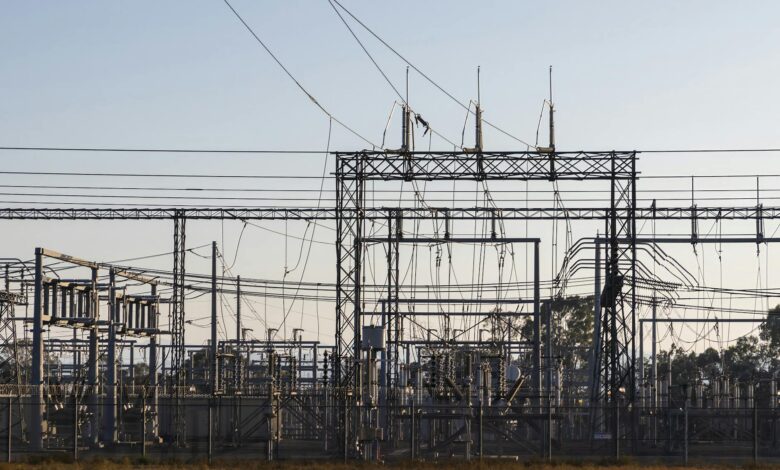Empowering the Power Sector

Electricity is the life-blood of modern societies. Since its widespread use began in the late 1800s, electricity has had a profound impact on the lives of people and in the progress of humanity, spawning multiple industrial revolutions, driving technological progress, and catalyzing cultural shifts around the world.
In Kuwait, electricity became available to the general public in 1952, when the government began producing and distributing electric power from the Shuwaikh power plant with three small steam turbines having a combined capacity of 2.25MW.Over the decades a continuously growing demand for electricity led to development of new power stations with a total capacity today of over 18 GW.
The incessant demand for energy, driven by economic and population growth as well as changes in economic structure,, has resulted in electricity production struggling to catch-up with demand. In late May this year, soaring temperatures caused power demand to exceed a record 17,000 MW, leading to power outages and power cuts around the country. In recent years, especially during peak summer months, power supply disruptions have become the norm.
Ministry of Electricity, Water and Renewable Energy, (MEWRE) plans to meet growing demand largely by expanding capacity of existing power plants and developing new energy projects. But electricity production in Kuwait is heavily reliant on fossil fuels (52% from the burning of gas and over 47% from oil). Greenhouse Gas (GHG) emissions from these power plants are a major challenge to public health and to the country’s sustainable economic development.
In light of growing health concerns and environmental stewardship, as well as commitment to the Paris Climate Agreement to reduce GHG emissions, Kuwait has set itself the target of achieving 15 percent energy production from renewable energy sources by 2030. The country currently produces less than 0.5 percent of its total energy output from renewable sources, and ramping up production to the aspired 15 percent target will be challenging.
To its credit, in recent years the government has been actively pursuing the development of renewable energy, with several ambitious projects in the pipeline, In May, MEWRE announced that it was qualifying companies to participate in a tender for a solar photovoltaic (PV) plant.with a net capacity of 500 MW, as part of Phase 3 of the Al Shagaya Renewable Energy Complex.
Increasing the share of low-carbon electricity is crucial to reduce the environmental impact and to align with global clean energy goals. In its Nationally Determined Contributions (NDC) on climate change submitted in 2021 Kuwait stated it aims to reduce GHG emissions through oil-to-gas substitution in energy production, new Combined Cycle Gas Turbines in power plants, and renewable energy projects.
Kuwait has also announced its aspiration to deliver net zero carbon emissions in its oil and gas sector by 2050, and to become totally carbon neutral by 2060. But, lowering the carbon footprint of the hydrocarbon sector, reducing GHG emissions, and launching new renewable energy projects, while welcome, will not on their own meet Kuwait’s climate goals. Moreover, these are expensive, long-term plans, while climate change repercussions are already here.
The good news is that an immediate and cost-effective solution to the energy conundrum is readily available in the form of waste energy—to be more precise, wasted energy. Capturing wasted power through energy efficiency initiatives could help Kuwait bridge the growing gap between power supply and demand, while lowering its carbon footprint, and promoting sustainable economic development.
Although accurate data on the energy lost during production, transmission, distribution, and consumption of energy in Kuwait is limited, it is safe to assume that energy efficiency in Kuwait is unlikely to be any better than the global average.
The World Bank estimates that on average two-thirds of energy produced worldwide is wasted, marking a loss of nearly 5 percent of global GDP.
If not two-thirds, at least a significant portion of energy produced in Kuwait ends up wasted. Energy efficiency is a low-cost transformative solution that can help Kuwait to recoup this wasted energy, while also avoiding expenditure on new energy infrastructure, lowering fuel imports, and curbing GHG emissions. However, in many countries only a small fraction of energy investments is directed towards energy efficiency strategies.
This is surprising, considering that energy efficiency investments are a smart choice, with every dollar invested in efficiency strategies yielding $3 to $5 in returns. The World Bank estimates that for a typical middle-income country, energy efficiency investments can provide nearly US$12 billion in savings by 2050. Unfortunately, the political will, supportive policies, adequate financing for energy efficiency projects are not always available.
Energy efficiency begins with transforming the currently ‘dumb’ electricity transmission and distribution network— from the power station to the end-user—into a ‘smart’ and more efficient grid. A smart grid involves the deployment of smart meters, grid sensors, automated feeder switches, energy management systems and other Internet-of-Things (IoT) that enable bi-directional communication between utility vendors and consumers, for better energy use monitoring and actioning.
A smart efficient grid leverages digital and communication technologies to gather information on the status and potential efficiencies of the supply grid and the demand patterns of consumers. This real-time data collection enables utilities to provide more efficient transmission and reduce operational costs, while lowering energy costs for consumers. By automating fault detection and enabling real-time monitoring, smart grids can also significantly enhance grid reliability and quality of power delivery, leading to fewer and shorter outages.
It is laudable that Kuwait has taken initial steps towards energy efficiency through the deployment of smart electricity meters across the country. The next logical step is to make the transmission lines (conductors) smart and fit for purpose, by ‘reconductoring’ the transmission lines. Reconductoring basically involves replacing the existing outdated Aluminum Conductor Steel Support (ACSS) with Aluminum Conductor Composite Core (ACCC) in high-power lines.
The carbon fiber composite core in the ACCC design enables several cost-saving benefits. Its ability to withstand higher temperatures, allows for a two-fold increase in current carrying capacity while reducing 25 to 40 percent of line losses relative to earlier cables. Higher current carrying capacity with lower loss is needed to transition from the current 300kV to more efficient 765kV or 800kV HVDC lines.
Higher capacity lines will also allow for integration of new power from renewable sources on existing infrastructure. Additionally, the lighter weight and negligible line-sagging of composite carbon cables enables longer spans, which translates to fewer towers and a significant reduction in infrastructure costs. Integrating smart optical fibers in the ACCC grid can offer data transmission that allow utility providers to monitor the real-time status of the line and to intervene effectively.
Experts estimate that optimizing the ACSS cables currently used could at best allow for a 20 to 40 percent increase in transmission capability, while reconductoring with ACCC can bring about a transformational change that could yield up to 200 percent increase in capacity. Estimates also show that laying high power lines to the new cities planned in Kuwait over the near future could cost 10 to 20 times more when compared to reconductoring with ACCC.
The World Bank points out that if countries need to provide affordable and reliable energy for their people and national economies, energy efficiency is the best option. Energy efficiency helps lower energy subsidies, facilitate tariff reforms, and reduce public energy costs. It can boost competitiveness, promote job growth, enhance energy security, and provide a range of collateral benefits from reduced pollution to improved health and enhanced resilience. It is clearly a win-win solution that needs to find more support from the authorities.















